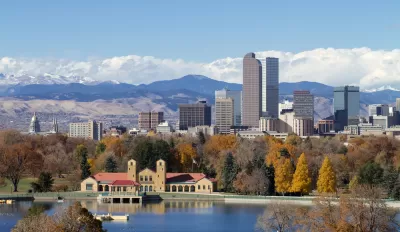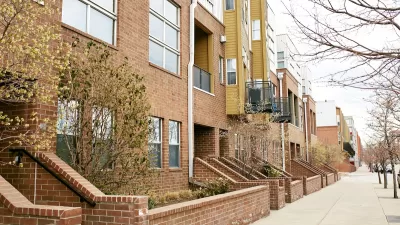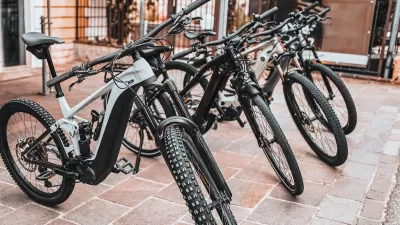The Denver Post writes about Brad Buchanan, who in February became the executive director of the Denver Department of Community Planning and Development.

Jon Murray writes an article that examines the question raised by the headline in relation to Buchanan's leadership of the Department of Community Planning and Development. Murray first describes Buchanan: "The weekend farmer who's also a longtime architect well-regarded in development circles is five months into his job as Denver's head city planner."
Buchanan lives an hour outside of Denver, and "[that] juxtaposition — an Eastern Plains rancher responsible for making key decisions about Denver's increasingly dense urban footprint — has some critics of the city's building bonanza grumbling."
Buchanan explains in his own words, however, about how his rural residence and the ranching operations there compliment the ongoing project or redeveloping Denver's urban environments. Buchanan is quoted directly:
"To me, there are two big jobs we have as human beings trying to figure out how we're going to keep the planet alive…We need to protect nature ... and we need to perfect the urban environment. I get to do both with my lifestyle."
Murray also acknowledges that in addition to the opposition Buchanan has encountered from neighborhood groups concerned about density, Buchanan has ardent supporters, like Mayor Michael Hancock and Ken Schroeppel—the latter "an urban planning and design instructor at the University of Colorado Denver and founder of the widely read DenverInfill and DenverUrbanism blogs."
FULL STORY: Rancher at home, urbanist at work: Top Denver planner raises eyebrows

Manufactured Crisis: Losing the Nation’s Largest Source of Unsubsidized Affordable Housing
Manufactured housing communities have long been an affordable housing option for millions of people living in the U.S., but that affordability is disappearing rapidly. How did we get here?

Americans May Be Stuck — But Why?
Americans are moving a lot less than they once did, and that is a problem. While Yoni Applebaum, in his highly-publicized article Stuck, gets the reasons badly wrong, it's still important to ask: why are we moving so much less than before?

Using Old Oil and Gas Wells for Green Energy Storage
Penn State researchers have found that repurposing abandoned oil and gas wells for geothermal-assisted compressed-air energy storage can boost efficiency, reduce environmental risks, and support clean energy and job transitions.

Updating LA’s Tree Rules Could Bring More Shade to Underserved Neighborhoods
A new USC study finds that relaxing Los Angeles’ outdated tree planting guidelines could significantly expand urban tree canopy and reduce shade disparities in lower-income neighborhoods, though infrastructure investments are also needed.

California's Canal Solar Projects Aim to Conserve Resources and Expand Clean Energy
California’s Project Nexus has begun generating electricity from solar panels installed over irrigation canals, with researchers and state agencies exploring statewide expansion to conserve water and boost clean energy production.

HHS Staff Cuts Gut Energy Assistance Program
The full staff of a federal program that distributes heating and cooling assistance for low-income families was laid off, jeopardizing the program’s operations.
Urban Design for Planners 1: Software Tools
This six-course series explores essential urban design concepts using open source software and equips planners with the tools they need to participate fully in the urban design process.
Planning for Universal Design
Learn the tools for implementing Universal Design in planning regulations.
Heyer Gruel & Associates PA
City of Moreno Valley
Institute for Housing and Urban Development Studies (IHS)
City of Grandview
Harvard GSD Executive Education
Salt Lake City
NYU Wagner Graduate School of Public Service
City of Cambridge, Maryland





























